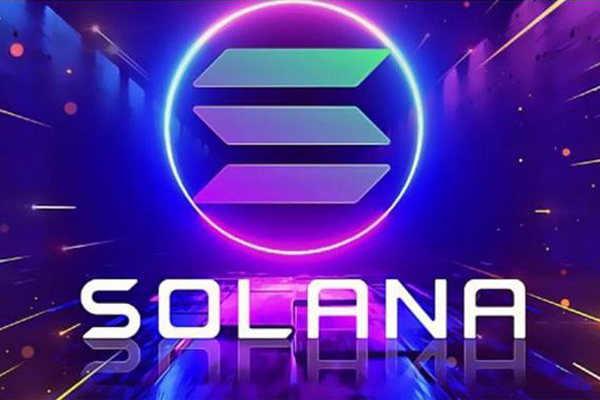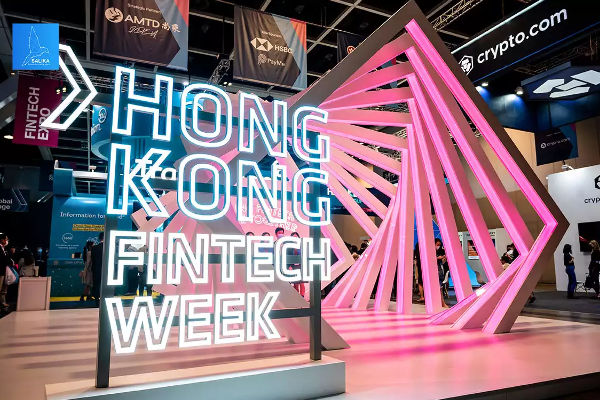Ten thousand words to interpret the evolution of MEV on Solana and its merits and demerits

What will kill Jito will not be the next Jito, but a completely new form of application.
Solana has been around for five years, and Jito (the leader of MEV infrastructure on Solana) has been around for less than three years, but its market share has grown rapidly from the initial 15% to the current 95%. It can be said that most of the Meme transactions on Solana have to go through it!
There is no fanfare throughout the process, please sit down, click on the collection, and let the fourteenth gentleman go deep into the underlying principles and gradually reveal to you:
What is Jito-solana? Why can it occupy the market in 2 years?
The difference between the core mechanism of Solana and Ethereum.
Why are your transactions always being squeezed?
How will Solana's future MEV landscape develop?
1. What is Jito-solana?
Of course, it is not just Jito-solana (the leader with 95% market share) that does mev infrastructure on Solana, there are also other manufacturers with different entry points, such as Paladin, Deeznode, BlockRazor, BloxRoute, Galaxy, Nozomi, etc.
This article will start with the development history and technical principles of the core leaders, and then comment on the advantages and disadvantages and entry points of these companies.
1.1. Jito's development timeline
First, let's use the timeline to look at the magic of its market share development speed. Please pay attention to the pledge rate and related partners.
Established at the end of 21
Launched on the Solana mainnet in June 22, and there were 200 validators in September of the same year, covering 15% of the pledge volume
From 22 to 23, financing + iteration + cooperation with Solana foundation, Jito client was included in the official recommendation
In 23 TGE, staking Jito to obtain MEV income bonus, forming a pledge and re-staking model.
In Q1 24, due to strong community opposition, the channel for jito-solana to send transactions to jito-blockengine was closed.
In Q2 of 24, there were more than 500 cooperating validators, covering 70% of Solana MEV, and processing 3 billion transactions in 24 years
In Q1 of 25, the pledge coverage rate has reached 94.71%. Today, the importance of cross-chain bridges is still self-evident.
Therefore, it can be said that Jito is the leader of the infrastructure in the MEV ecosystem on Solana today. He has developed over the past three years.
He has established a solid support base for Solana validators, so that most transactions have to go through Jito's system.
It is his system diversion that has greatly reduced Solana's downtime.
It is him who has made the clamps have high-profit income.
It is also him who has allowed Solana's validators to increase their MEV income by an additional 30%, and steadily.
It is also him who has changed from the original dragon slayer to the dragon, and has repeatedly jumped between the warrior and the dragon, sometimes ferocious and sometimes kind.
In today's mainstream Meme narrative in the market, he has become a two-faced player who can eat both ends.
1.2. What kind of system has Jito built?
It actually consists of three core services, block-engine, jito-solana, and jito-relayer. The relationship between them is as follows:
First is block-engine, which is an auction system.
Its typical scenario is to allow the clamps to submit a fixed order of less than 5 transactions through a Bundle package composed of multiple transactions for auction, in which an additional transaction called Tips can be sent to the validators as an additional tip, so that the validators are willing to package the Bundle package first.
Other scenarios include dex platforms such as okx, gmgn, and bn wallet. In order to avoid users being clamped, tips can be added to users' transactions separately, and the auction route can be taken, so as to reach the end point of the transaction chain faster.
The second is jito-solana, which is a client that replaces the validator to verify the transaction and produce blocks.
Its core function is to allow the validator to receive the Bundle package sent by the block-engine, so as to give priority to the transaction and finally complete the construction of the transaction sequence. At its peak, the number of bundles processed every day can reach 25 million (recently 10 million), and almost every transaction is profitable.
The final tips collected here are delivered to a unified account, and then 95-97% are given to the validator, and 3-5% are shared by jito itself.
Among them, the most controversial is jito-relayer, which can be understood as the gateway of the validator, used to receive transactions.
Initially, when this relayer receives a transaction, it will delay 200ms and then give it to jito-solana, while the synchronous one will not delay and give the transaction to block-engine. Obviously, this is selling order data. Therefore, the earliest rise of jito is due to the spread that users suffer.
It should be noted that in March 24, the official propaganda of this rule no longer transmits data, but to this day, the forwarding switch and the 200ms delay setting item can still be found in jito-relayer.
So, whether the validator sells the user's data now? It is unknown with the closed source of blockengine.
1.3. How much money did the Jito system make?
Obviously, the spread between transactions with and without a transaction will be introduced with the introduction of the tips mechanism, and will eventually be given to the validator, which has led to the current situation of its market share skyrocketing. Who would refuse an extra 30% profit?
So the total number of bundles launched in the past year has reached 4.3 billion, and the total tips fees generated have reached 5.51 million SOLs. At the market price of 140, the additional income of 7.7 billion US dollars has been generated with the jito infrastructure.
However, not all of them are for Jito, the system provider. As mentioned earlier, there is a 3-5% platform profit sharing between jito and the validator, so the actual income of jito itself is about 200,000-270,000 SOLs, or about 35 million US dollars, in the past year.
It is equivalent to the income of King of Glory for two days, which seems not high? In fact, it is not necessarily, because this is the actual platform income after all, facing the situation that most industries in the web3 field cannot talk about specific revenue.
He has achieved oligopoly, with exclusivity from other competitors (after all, validators can only run one client), and the income comes from the recent meme weakness. If Solana explores more trading scenarios in the long term.
Even in the case of long-term lack of market competitors, the platform adjusts the profit sharing from 3-5% to 30% (this is actually the common platform fee rate after the Internet application monopolizes the market).
Then you can give a very high PE estimate. According to the 30PE of the web2 industry leader, the valuation can reach 1 billion, and according to the common web3 valuation of 300 times the expected monopoly and potential industry growth, it can reach 10 billion. For similar estimation methods, refer to "Super Intermediary or Business Wizard? Let's look at the cross-chain bridge leader LayerZero from V1 to V2 in the past year"
However, today we are not here to sort out such a macro conclusion, nor just to understand it by relying on a fantasy virtual valuation. Instead, we hope to go into the details, understand its deeper principles, and analyze the future development of the market.
1.4. What demand scenarios can jito support?
This topic is actually about what types of attacks are there on MEV at present
The most common one is the Frontrun type, such as:
Arbitrage, arbitrage, like Ethereum, risk-free arbitrage.
Sandwitch Attack, a typical sandwich attack, the income of sandwiches on SOL is about $2 per 1.
JIT - Just in time liquidity, an operation that provides instant liquidity.
There is also a large category of Backrun type:
It refers to inserting arbitrage transactions after the target transaction (such as large DEX transactions, liquidation events), and taking advantage of the market fluctuations caused by the target transaction to make profits. The specific scenarios are:
DEX arbitrage: You can understand that any transaction will cause a direct spread between different DEXs. Then follow closely to smooth out the spread.
Liquidation follow-up: After the user's collateral is liquidated, the trailing transaction acquires the asset at a discount and resells it.
Oracle delay: Before the oracle updates the price, the reverse operation is performed based on the outdated price.
In addition to the obvious attack scenarios, there are other acceleration scenarios that are suitable for Jito. So objectively speaking, Jito cannot be said to serve only mev, but for all scenarios with acceleration and batch transaction bundling needs.
For example, in the lively opening activities on Solana, the dealer will actually use the bundling mechanism and acceleration mechanism of Bundle to open the market + deploy chips and other operations.
For example, major exchanges can actually avoid being attacked by bundling tips for large transactions to users. But it should be noted that these scenarios cannot actually stop the validator from doing evil (in fact, you can't determine which validator is doing evil).
2. In-depth understanding of the system differences between Solana and ETH
Why is Jito so suitable for Solana?
Why doesn't this market have multi-headed competition like ETH?
We have to start from the system differences between the two. You may have heard of POH consensus many times, but in fact, Solana's transaction life cycle is different from eth, which also creates a completely different ecology between the two.
2.1. ETH's MEV pattern
Two years ago, on the first anniversary of the Ethereum merger, the author once systematically analyzed: "MEV pattern one year after the Ethereum merger"
It can be clearly seen that the system life cycle of Ethereum is very clear:
This is because after the merger, two very important points for MEV appeared:
1. Ethereum's block interval has become stable. It is no longer a relatively discrete and random situation of 3-30S before. This is a mixed blessing for MEV. Although Searcher does not need to rush to see slightly profitable transactions and send them out directly, it can continuously accumulate a better total transaction sequence and entrust it to the validator before the block is generated, but it also intensifies the competition between Searchers.
2. Reduced miner incentives. Prompt validators to be more willing to accept MEV's transaction auctions, allowing MEV to reach 90% of the market share in just 2-3 months.
So there are roles such as Searcher, Builder, Relay, Proposer, and Validator.
Each block life cycle is:
Builders create a block by receiving transactions from users, searchers, or other (private or public) order flows
Builders submit the block to the relay (i.e., there are multiple builders)
The relay verifies the validity of the block and calculates the amount it should pay to the block producer
The relay sends a transaction sequence package and a revenue price (also an auction bid) to the block producer of the current slot
Block producers evaluate all the bids they receive and choose the sequence package that gives them the highest revenue
Block producers send this signed header back to the relay (i.e., this round of auctions is completed)
After the block is released, the rewards are distributed to builders and proposers through transactions and block rewards within the block.
Therefore, the author believes that Ethereum's MEV must be a situation of high internal competition between Searchers and Builders.
And the actual data is also like this: the overall yield rate has dropped significantly by 62%.
One year before the merger, the average profit calculated from MEV-Explore was 22MU/M (starting from September 21 and ending before the merger in September 22, the values merged Arbitrage and liquidation modes)
One year after the merger, the average profit calculated from Eigenphi was 8.3MU/M (starting from December 22 and ending at the end of September 23, the values merged Arbitrage and Sandwich modes)
Of course, you may think that MEV-boost on ETH is growing faster? Indeed!
But fast growth does not mean high profit? We have just analyzed how much profit is, and the root cause of Ethereum's fast growth is that miners' incentives are reduced, prompting validators to be more willing to accept MEV's transaction auctions, so that it can reach 90% of the market share in just 2-3 months
And the biggest difference between ETH and Solana is that there are multiple builders, and their different final returns affect the decision-making of validators, thus forming competition between builders.
Because of competition, searcher profits are constantly shrinking. Because of competition, in addition to algorithms, the only thing that affects builders is the amount of data.
Searchers that cannot compete will exit the market, while builders that can get a lot of data often have their own infrastructure and market reputation to form a stable total order flow, rather than relying on the propagation of Mempool between nodes.
This will lead to the fact that ETH's MEV market is actually more market-oriented than a pure oligopoly platform system like Solana, which can relatively give users a little respite.
2.2. Solana's block mechanism
After understanding the ETH system, please clear your mind, because Solana is different from Ethereum in many places, even the traditional blocks are different.
And it is these mechanisms that bring the root cause of the rampant mev in the Solana system.
We can use a table to quickly compare these four core features
The key lies in the two characteristics of no memory pool and direct connection to the leader. The former brings transaction delays and the latter brings validators to do evil.
2.2.1. Solana actually has no memory pool
The 200ms delay of jito mentioned earlier and the synchronous transmission to the blockengine are actually a kind of monetized memory pool. So objectively speaking, it does not have a memory pool mechanism (this is actually Solana's optimization function for speeding up and privacy protection). How will it affect the block mechanism of transactions?
If you are an ordinary user, initiate a transaction and give it to a certain node, it is equivalent to broadcasting.
Then under the default configuration, this node will immediately look for the current leader and the next leader (a total of 2 validators) and submit your transaction.
As for where the transaction order will be? This needs to distinguish between native Solana and jito-solana:
Native Solana: After the leader gets the transaction, in theory, it will follow FIFO (first in, first out) to see who comes to my leader first, and then I will include it in the transaction sequence. Combined with the POH mechanism, it is equivalent to dividing a block into a large number of small ticks for synchronization.
Jito-Solana: Normal transactions to the leader have a queue for calculating the current gaslimit (called CU in the SVM system, computing resources), and its weight is lower than that of Bundle transactions, so ordinary transactions will be behind Bundle transactions. If it is the same transaction (that is, someone attacks you), then Jito-Solana will prioritize the transactions that attack you. Here, 80% is given to Bundle, and only 20% is given to traditional ordinary transactions.
Therefore, Solana does not have a memory pool, but only reduces public transmission, rather than completely eliminating (and impossible to) transmission.
This feature makes the Searcher on Solana exclusive to high-end players.
2.2.2, the leader of subsequent block generation is predictable
The validators will take each epoch as a unit (about 2-3 days), during which time they will continuously randomly sample from 1,300 validators. The VDF algorithm is used here, and there will be a weighted effect of staking rights.
For example, if the total sol staking amount is 2 million, and you have staked 200,000 sol, then you will have a 10% chance of being selected in each random selection.
If you are selected, you will be responsible for the next 4 slots (the benchmark concept of blocks in Solana) for about 1.6 seconds.
This speed is very fast, so any valid node can calculate who the subsequent validator is, and try to link with him to submit the user's transaction. Due to network delays, it is also easy for the transaction to miss the current leader and be delivered to the next leader.
2.2.3. The leader's link strategy also has a stake weighting
That is, the SWQoS mechanism. The current leader's total p2p connection capacity is 2,500, of which 80% (2,000 connections) are reserved for SWQoS (that is, nodes that have made stakes).
The remaining 20% (500 connections) are allocated to transaction messages from non-stake nodes.
It sounds confusing, but in fact, this is a new mechanism to prevent spam and enhance Sybil resistance. The purpose is to allow the leader to prioritize transaction messages proxied by other staked validators.
2.3. Why is Solana vulnerable to attacks?
Even many ordinary users, in order to prevent their transactions from being clamped, think that they can also give high Priority Fees (transaction priority fees), so that miners can package their transactions first? So as not to be clamped?
The truth is that it has a little effect, but not much, and in extreme cases it even has a counter-effect.
From the above figure, we can see that in fact, the Priority Fees given by users are similar to the probability of geometric proportion, while tips are prone to fluctuations and competition, and tips are essentially a separate transaction. From an external point of view, it is actually unknown which transactions are in the Bundle.
So no matter how high your priority fee is, it can only be ranked in the last 20% queue of the validator to produce blocks in this slot, but for the Searcher who can find your order at the beginning and send a clamp to attack you, it is very easy to get a high Priority Fee. The average CU unit price of the Fees Bundle is higher, so it is naturally given priority in the validator's Bundle consumption queue and broadcast synchronously.
Similarly, other Solana mechanisms seem to be mechanisms that are not easy for users to be clamped at first glance, so why is the clamp on Solana the most rampant? The key points are:
It is difficult to prove that the leader is doing evil
There are AB2 leaders before and after the leader, and they can get all the user's transactions, so the cost and ambiguity of leaderB's evil are lowered.
You think, as the second leader, I see a profitable transaction, so I quickly build a clamp attack and give it to the blockengine for auction, and then under the 80% Bundle priority mechanism, my attack will naturally take effect first, but the one packaged is leaderA.
Then how do you judge that I, leaderB, am an attacker?
Of course, you can say that leaderA finally packaged the attack transaction, so he is an attacker, but in the default logic, 95% of the validators are will do the same thing, then the chance of intervening with them becomes smaller.
Penalty A is indeed unreasonable. After all, there are other links in the middle, which may also lead to information leakage, as follows.
Transaction retry, long stay time
Each slot is only 400ms, but have you ever experienced that the transaction on Solana is inexplicably suspended for more than 23s?
You may have hastily thought that the performance of the node you are connected to is not enough, but it is not.
Because of the Swqos mechanism, if you are connected to an ordinary node, then he calculates and finds the leader to submit the transaction, but when the network is congested, he only has 500 connection pools for ordinary nodes. Once the connection fails and the submission fails, it will retry all transactions of the node every 2s.
The above parameters are the underlying default parameters of the Solana node. Different nodes can have different settings (for example, change to 1s retry).
For ordinary users, how can the probability of encountering a retry be measured?
As of March 2025, Solana currently has about 1,300 validators and 4,000 RPC nodes.
Once it is crowded, 2700 nodes will compete for 500 connection pools within 1.6s (4 slots). If the leader's space is not squeezed, the next one will continue to look for the next one.
So under the assumption. If your transaction stays in the node for a long time, how will they treat it? If your CU price is not high enough, and the leader is full, and he has also seen the transaction, what should he do?
Yes, sell data. For nodes with large traffic, some searchers will buy them at a price of 10,000 US dollars a month and acquire order flows.
Meme narrative and the scale of increased staking income
First, the market stage of meme. Because Solana's mainstream narrative is the Meme ecosystem, the pool on the chain is very shallow, which makes it easy for users to trade with a loose slippage setting in order to complete the transaction, which also amplifies the attack income of the searcher (currently a few samples have been sampled, and they can all reach a profit of 2 US dollars, which is very high compared to ETH's almost 0.1 US dollars).
Second, Solana's validator staking income is about 8% annualized, which has been a relatively stable value for many years.
The annualized income of mev after the enhancement is about 1.5%.
The combination of the two means that the staker can increase the staking yield by 15-30% by running the jito-solana client. When the local market explodes, even the yield of mev can exceed the staking income itself.
2.4. Why are Solana's validators prone to rebellion?
The profit is too high, and the cost is also very high, forcing the validators to continuously expand the source and increase income.
The voting cost of validators is about 300-350 SOL per year (estimated at 42,000 USD at a market price of 140 USD) and the hardware cost is 4,200 USD (not including the cost of the dynamic network).
Solana's huge node configuration burden requires node performance to be at least 24 cores, 256GB memory, and 2*1.9TB NVME.
The custom Latitude models commonly seen on the market are currently used by 14% of validators, which costs 350 USD per month.
In the end, only 458 of Solana's 1,323 validators are profitable. This is why the "SIMD-0228 Proposal" was voted down.
From the results, this proposal will further reduce the incentive for block generation, which will inevitably force smaller validators to withdraw. It will even lead to an irreversible change in the centralization of the platform. And when the revenue share of mev increases, while the revenue of essential work decreases, what do you think will happen?
Let's take a look at the strategies of competitors other than Jito
3. Other competitors of MEV on Solana
3.1. Paladin: VIP preemption and transaction protection
Current market share: 5%, launched at the end of 2023, as of March 2025, the official announcement is that 205 validator nodes have deployed Paladin, staking 53M SOL, and using the Paladin client can increase node revenue by about 12.5%.
In fact, it is essentially based on a forked version of the Jito-Solana client.
The core selling point of the launch is
P3 priority port: let the leader of the block open this fast VIP channel and re-process it according to the original FIFO rules.
Identify and eliminate clamp attacks: Although this initially seems to be unfavorable to validator rewards, Paladin validators are compensated through a trust-based mechanism. Validators who avoid "sandwiches" can attract direct transactions, thereby creating an ecosystem of trust and increasing returns.
Paladin Bot: This is an open source high-frequency arbitrage robot that runs directly on the local validator node and is only started when the node is elected as the Leader. When the Leader has Paladin Bot, it will quickly execute simple and risk-free MEV strategies (such as two-to-two DEX spread arbitrage, centralized exchanges and on-chain spread arbitrage, etc.), and directly include the profits in the validator's income
As of December 3, 24, the last bot has been officially deleted.
3.2, bloXroute: Network layer optimization + private channel guarantee
bloXroute Labs is an infrastructure company that provides blockchain data distribution network (BDN). It has previously accelerated transaction broadcasts and reduced latency on chains such as Ethereum.
bloXroute does not directly participate in MEV distribution, but by providing faster channels, it can help preemptive transactions reach the Leader faster.
Unlike Jito/Paladin, bloXroute does not directly modify the Solana verification client or introduce a transaction auction mechanism, but provides a faster message channel for all nodes at the network layer.
Its main idea is to relay Solana's block "shred" (fragments) to all validators more quickly through a global acceleration node network, reducing the delay in data broadcast when the Leader produces blocks and the forks caused by poor network. So the services provided are:
Solana BDN acceleration: According to official documents, bloXroute Solana BDN can reduce the block fragment propagation delay by 30-50 milliseconds
MEV-Protect RPC service, similar to Ethereum's protected private transaction port, indicates that bloXroute plans to allow users to send transactions privately to the Leader through its RPC to avoid being seen by third parties, thereby preventing front-running or preemption.
3.3, BlockRazor: Network layer optimization + private channel protection
BlockRazor is a newly established MEV infrastructure project in 2024, and the team behind it is mainly from Asia. It is positioned as an "intention-centric network service provider" and plans to provide MEV Protect RPC, high-performance network acceleration, MEV Builder and other services on mainstream blockchains
Scutum MEV Protect RPC: This is a private transaction gateway service launched by BlockRazor, similar to Flashbots Protect. Users can submit transaction bundles through Scutum RPC,
BlockRazor will ensure that these transactions are not published through the public mempool and are sent directly to block producers to avoid being preempted or sandwiched.
4. Summary
4.1. How do you view the competitive landscape of MEV on Solana?
Just the day before yesterday, a new competitor entered the market
Warlock Labs raised $8 million on March 27, 2025, aiming to reshape the on-chain order flow.
However, he focuses on the Ethereum track and plans to provide some kind of proof for the order flow data and register it on the chain to ensure that they are accurate and responsible in processing user transactions.
This is my point of view: a truly good market will have new competitors constantly entering, but an oligopolistic market will bring about the closure of challengers. What kind of market does the platform layer expect to become?
Let us think more deeply about what is really important in this mev infrastructure?
Paladin is built on jito-solana, which means that jito can actually upgrade a version and no longer support the so-called P3 channel, just like the 3Q war of the year. In the end, whoever has a stronger demand (obviously social) wins. The same thing also happened in WeChat's ban on sharing in Moments such as NetEase Cloud Music. If there is no larger layer of rule machines, then this set of exclusive competition strategies can be used in any track indefinitely. Moreover, Paladin's 5% market share today is also because of the early use of built-in bots to increase the profits of validators. Although his open source bot is only centered on non-strong offensiveness (i.e., doing brick-moving, not sandwiches, etc., which obviously damages the interests of users), it is still pushed offline by market opinion.
Moreover, several other competitors, bloXroute and BlockRazor, all take the route of acceleration + privacy channel. The so-called privacy is limited to only one leader, so as to avoid the next evil, and to face the solution of direct attack from both sides.
The acceleration capability is indeed a solid technical strength now. It is also the focus of the next wallet/Dex market war.
Objectively speaking, Solana's original client code is still written with some historical debts, so someone once jumped out and modified the client to make the configuration lower and the synchronization faster. In addition, combined with the Swqos mechanism, being a validator can actually improve the connection stability and success rate.
In addition, jito's blockengine system is actually a multi-center system, but no matter how many centers there are (not completely decentralized), there will be single point failures. Since it is the core link of the upstream, once it goes down, it is equivalent to Solana going down.
Therefore, to achieve multi-node disaster recovery and speed up, the system still has to go through a wave of stress testing challenges. This is why there are more bugs in Binance Wallet. Many historical technologies have not been caught up yet.
But the issue of technical strength will eventually be solved.
Any company can do multi-node global optimization. In the final continent where the leader is, the shortest channel will be established to quickly reach the leader. You can also establish a multicast strategy to divert different user needs. The future competition results will inevitably be the result of refined operations.
But what cannot be solved is the problem of market competition.
If jito-solana takes advantage of the oligopoly advantage and modifies the Bundle priority strategy from 80% to 90%, or even 95%, then ordinary users can only infinitely increase the Priority Fees to compete for the 5% CU space that is leaked.
But here, when the total CU is underutilized, it will eventually affect the total value of the validator's income (and because a large number of transactions are piled up in the unprocessed queue, the validator's motivation to do evil is stronger), so Jito will not start such a competition mode unless it is absolutely necessary.
So why is the market competition of ETH more open? And Solana's competition is more exclusive?
The author believes that the root cause is the lack of the role of Builder bidding.
ETH can have multiple builders to produce multiple final block sequences, and the validator only verifies and chooses which one.
However, Solana has only multiple blockengines (and they are all its own), and the transaction queue it gives to the validator is actually a single Bundle (5 transactions), which lacks the link of multiple Builder competition.
Objectively speaking, it can be seen from the development history of ETH that this competition will significantly increase the income of the validator and reduce the income of the searcher. When the income of the searcher decreases, the attack will also decrease, and finally a balance will be reached.
In the future when both technology and market are balanced, what is the real competitiveness?
I believe that when the technological gap is eliminated with talent competition and investment, and when the market is centralized and decentralized and ultimately affects the overall ecology of SOL, it will be resolved. Now Solana has also started the discussion of multiple builders, and even further opened the discussion of the plan of multiple leaders to further randomly generate blocks.
Although multiple leaders also mean that more people will get your order, since the final block producer is a random one of multiple simultaneous queues, it also realizes the competition of multiple builders in disguise, and the market impact will be the same as before.
Then the real competitiveness will be transferred to the data island of order flow.
For example, Jupiter has occupied more than 80% of the dex market, so its order flow is the biggest sweet cake. It depends on how he weighs whether to provide the best price or randomly pick some "lucky geese" from it to make a profit, even if it loses some brand reputation.
Here I think the reason why they don't do mev infrastructure by themselves is probably that in the face of the developing market stage, no one can say that they are as majestic as traditional big companies, so focusing on profit at this time will give competitors the opportunity to overtake.
And mev is always a game theory problem. Once it reaches a monopoly position, then with the support of the validators who rely on the monopoly, they will push the facilities to give profits.
Any dragon slayer seems to have the unstoppable potential to become a dragon, and become a combination of dragons and warriors.
Of course, you may say that jito was originally an infrastructure for MEV, so how could it be a dragon slayer?
4.2. Jito's merits and demerits to Solana?
A lot of what I said before is jito's fault, so is jito meritorious?
Objectively speaking, jito is meritorious.
When I started to look at Solana 3 years ago, I sneered at it at that time (well, I admit that I was too loud at that time), but the root of such analysis is that its downtime rate is too high.
Why is there such a high downtime rate?
On the one hand, there were too many pitfalls in the early code, and later it was found that giving money could solve most of the problems (machine configurations continued to increase).
On the other hand, it is the strategy of FiFo. When there is a high-profit transaction on the chain, even if it is just a backrun attack, then whoever follows the closest will have a higher profit.
Obviously, each Searcher will build a set of facilities to send the fastest transaction to the leader, so the early leader is always subject to flood attacks.
With the emergence of blockengine, jito further generated a bidding link. If you see the profit, then you will go to auction first, and the traffic here will be diverted.
The auction here also has a function to intercept failed transactions, because if your transaction conflicts with others, and the price of others is higher, then since the two searchers are sandwiched between the transactions of the same person, there must be a storage conflict, so if you cannot bid, the blockengine will directly reject you, then you raise the price again and continue the auction (it may also randomly reject you, so that you mistakenly think that you must bid further, OK, big data is so friendly).
Of course, you will ask, why do we still see many failed transactions on Solana now?
Of course, because the blockengine is multi-center, the 400ms block speed between different centers makes it impossible for it to synchronize data quickly, thus eliminating the auction errors caused by different blockengines.
Therefore, the author believes that jito also has a contribution, after all, he has greatly reduced the downtime rate of Solana.
In addition to downtime, his bundled transactions also allow the market to have multiple application scenarios.
For a market to be prosperous, it is actually necessary to serve market makers well. Solana's most explosive market is the Meme market, which is inseparable from the opening group. They need to "obscurely" start collecting low-priced chips at the same time as the launch. This is a highly targeted scene. If the operator of the plate cannot collect enough profitable low-priced chips, then he may directly give up pulling the plate and directly reopen the plate.
In fact, it is disadvantageous to both sides, after all, he also opened the plate in vain.
And there are other transactions that need to be accelerated, such as various dexes. Now they trust that jito-solana will not sell data as blatantly as before, so for high-value transactions, users will be asked to give an additional tip fee, take the fast route of blockengine, and directly occupy 80% of the CU processing queue, thereby increasing transaction speed and avoiding being squeezed.
Improve the income of Solana stakers and improve the overall degree of decentralization
The previous data has been analyzed. Solana's own staking income is about 8% annualized, and through jito's mevtip income, it can reach about 10%, which is a good space.
And only 458 of Solana's 1,323 validators are profitable, and the others are not completely unprofitable (otherwise who would do it). In fact, the others are either directly evil, indirectly evil, or not motivated to make money (such as just for Swqos speed up). In essence, the above statistics are based on staking income, rather than fully incorporating mev income.
So it is because of the existence of jito that the remaining 800 validators are profitable, and today's Solana is less centralized.
So on the whole, jito-solana still has merits. At least at present, it has not completely adopted an exclusive competition strategy. At this time, there is still an opportunity for third parties to cut in.
4.3. How will the future MEV landscape develop?
I have mentioned several key points before. I think that it seems that there is only one dominant player and many strong players, but it is actually a time when opportunities are lurking.
First, because the profit of MEV on Solana is generally higher (about 2U, better than ETH's 0.1U), the meme trend will be accompanied by different narrative scenes and the transaction will be eternal, so there will be new Searchers entering. Although the higher order flow acquisition cost on Solana blocks some small players, the competition between big players will also increase investment with profits.
Second, there are a lot of opposing voices on Solana, competing with the MEV infrastructure. This forced Jito to announce the closure of the channel for selling data and forced Paladin to delete the built-in bot function. Among proposals such as simd-228, there is also the simd-96 proposal that has been passed.
Half of the rewards received by the validator, which was originally the sum of base fee + Priority Fees, will be destroyed, but now only half of the base fee will be destroyed. In disguise, it increases the income of validators from packaging normal user transactions, thereby increasing their motivation to fight against Jito's reduction of the weight of ordinary transactions. There are constantly new proposals participating in the game of Solana's macro decision-making.
Third, the overall profit margin of mev is large enough. For example, last year, Jito Labs' fee income in October was US$78.92 million, twice the record of US$39.45 million set in May, and higher than old DeFi protocols such as Lido and Uniswap. Even if Jito itself has to share dividends with the validators, the overall spread is the lower limit of the user's loss scale.
The greater the loss, the greater the motivation, and the user's expectations for reliable services can also be quantified. That is the opportunity for BlockRazor and bloXroute.
Moreover, what I am looking forward to is some more cutting-edge explorations:
Starting from privacy transactions: there are threshold encryption, delayed encryption and SGX encryption, which basically require decryption conditions from encrypted transaction information, or time locks, multi-signatures or trusted hardware models
Starting from fair transactions: there are fair sorting FSS and order flow auction MEV Auction, MEV-Share, Mev-Blocker, etc. The difference lies in the difference from no profit to profit sharing to profit weighing, that is, it is up to the user to decide what cost to use to obtain the relative fairness of the transaction.
Protocol-level improvement of PBS. At present, PBS is actually a proposal of the Ethereum Foundation, but it has been separated with the help of MEV-boost. In the future, such core mechanisms will be converted to Ethereum's own protocol mechanism.
Most of these have been proposed in Ethereum itself, but the compatibility differences have prevented them from surfacing to the user's field of vision, but these are also places where Solana itself can learn from.
5. Written at the end
The end of competition is often not surpassed by the efforts of the same track. The one who kills Jito will not be the next Jito (he has his merits and faults), but a completely new form of application.
In my previous research [UniswapX Protocol Interpretation], I summarized the profit sources of UniswapX's operation process, and wanted to fully portray the specific rate of return of MEV. After all, this is the source of what he fights against and distributes to users (essentially losing the real-time nature of transactions but in exchange for a better exchange price).
Similarly, order book-based exchanges (even decentralized exchanges) are also good tools to fight MEV. You can imagine that when computing power is further improved in the future and daily transactions are further expanded, the AMM mechanism and the corresponding MEV attack scenario will also disappear. However, the other challenges faced by the order book are no less than the MEV problem.
From the recent twists and turns of hyperliquid, we can see that, aside from the hidden worries of centralization, on the road of web3 as a whole towards compliance regulation, the players at the table have already put on suits and entered the international hall.
At this time, compliance is an all-round sword. After all, at this time, he stands on the side of the user.









